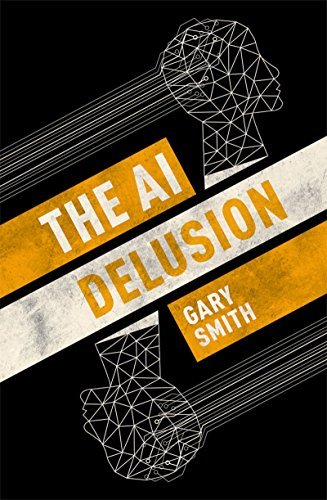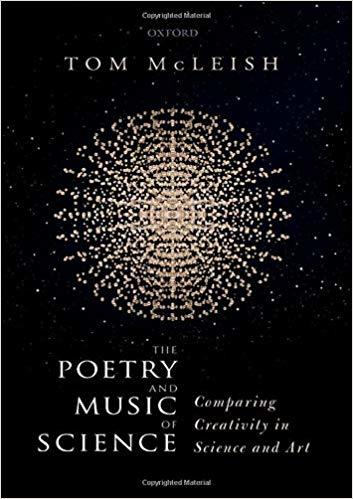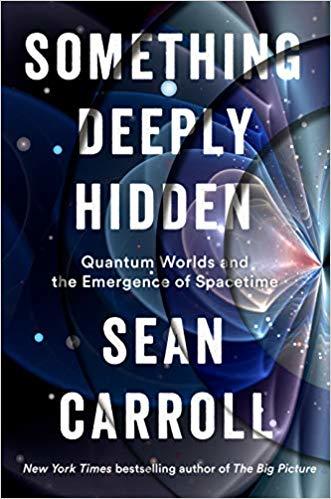Michael J. Behe's Blog, page 431
September 15, 2019
Battle of Britain Day, Sunday, Sept 15, 1940 + 79 years
Today marks the 79th anniversary by date and day, of “the thirteen hours that saved Britain” (and the world):
Again, food for thought to awaken us to sobering lessons of history. END
Copyright © 2019 Uncommon Descent . This Feed is for personal non-commercial use only. If you are not reading this material in your news aggregator, the site you are looking at is guilty of copyright infringement UNLESS EXPLICIT PERMISSION OTHERWISE HAS BEEN GIVEN. Please contact legal@uncommondescent.com so we can take legal action immediately.
Plugin by Taragana
The growth of the Internet, 1990 – 2019
Of general interest — and especially observe the rise of China, India and Nigeria:
Food for thought. END
Copyright © 2019 Uncommon Descent . This Feed is for personal non-commercial use only. If you are not reading this material in your news aggregator, the site you are looking at is guilty of copyright infringement UNLESS EXPLICIT PERMISSION OTHERWISE HAS BEEN GIVEN. Please contact legal@uncommondescent.com so we can take legal action immediately.
Plugin by Taragana
What about claims that robots can become spiritual?

Are the claims about spiritual robots just an intellectual cottage industry for edgy clergy?:
Some people have taken Pope Francis’s musings in recent years to mean pretty much whatever they want them to mean. For example,
But Francis’s wide arms have arguably never stretched further than a mass in 2014 when he suggested the church would baptize Martians.
“If—for example—tomorrow an expedition of Martians came … and one says, ‘But I want to be baptized!’ What would happen?” Pope Francis asked. “When the Lord shows us the way, who are we to say, ‘No, Lord, it is not prudent! No, let’s do it this way.’” Jonathan Merritt, “Is Ai a Threat to Christianity?” at the Atlantic (February 3, 2017)
Merritt promptly converts the hypothetical question—which depends, of course, on the assumption that Martians are beings much like ourselves—into: Are you there, God? It’s I, robot.
Fine writing, that, but what’s the basis for the string of assumptions? Is a computer more likely to be in need of salvation, in a religious sense, than a horse? Why so?
Proponents of artificial intelligence as equal or superior to human beings are talented at a certain type of rhetoric. Just listen: …
Denyse O’Leary, “Do churches need a catechism for robots?” at Mind Matters News
The fact that we have never found any extraterrestrial intelligences never seems to matter to this crowd. Never.
See also: Tales of an invented god
and
Will we become mere apps of our smart computers? At COSM, Kurzweil will offer a glimpse of his foreseen Singularity where we merge with superintelligent computers
Follow UD News at Twitter!
Copyright © 2019 Uncommon Descent . This Feed is for personal non-commercial use only. If you are not reading this material in your news aggregator, the site you are looking at is guilty of copyright infringement UNLESS EXPLICIT PERMISSION OTHERWISE HAS BEEN GIVEN. Please contact legal@uncommondescent.com so we can take legal action immediately.
Plugin by Taragana
Ed Feser on the delusion that computers are intelligent

Riffing off Gary Smith’s book, The The AI Delusion, ohe offers,
”As Smith observes, a computer can be programmed to detect instances of the word “betrayal” in scanned texts, but it lacks the concept of betrayal. Therefore, if a computer scans a story about betrayal that happens not to use the actual word “betrayal,” it will fail to detect the story’s theme. And if it scans text that does contain the word, but without deploying the concept of betrayal, the computer will erroneously classify it as a story about betrayal. Due to the rough correlation that exists between contexts in which the word “betrayal” appears, and contexts in which the concept is deployed, the computer will loosely simulate the behavior of someone who understands the word—but, says Smith, to suppose such a simulation amounts to real intelligence is like supposing that climbing a tree amounts to flying.” – Edward Feser, “Computer Pseudoscience” at City Journal
It is sobering to reflect on the possibility that public policy could be shaped by persons who are unfamiliar with such critical distinctions.
“If computers are intelligent, climbing a tree is flying” at Mind Matters News
More on Edward Feser: Remarkably, a simple triangle can disprove materialism Philosopher of mind Edward Feser and neurosurgeon Michael Egnor chat about the essential immateriality of our minds.
Also, Gary Smith explains why computers’ stupidity makes them dangerous. To take one example, computer algorithms failed Hillary Clinton in the 2016 election because the things they could not measure proved to be decisive factors. They can be misleading in medical research too because they don’t address the all-too-common Texas Sharpshooter Fallacies.
Copyright © 2019 Uncommon Descent . This Feed is for personal non-commercial use only. If you are not reading this material in your news aggregator, the site you are looking at is guilty of copyright infringement UNLESS EXPLICIT PERMISSION OTHERWISE HAS BEEN GIVEN. Please contact legal@uncommondescent.com so we can take legal action immediately.
Plugin by Taragana
September 14, 2019
Ancient human group as a “cold case” nearly half a million years ago?
This would be a great film, so long as someone other than Hollywood made it:
From the scene, authorities recovered DNA, a stone handaxe and more than 7,000 scattered bones, including a bashed human skull. It was a case for the ages. But there was one complication: the events unfolded 430,000 years ago.
The evidence was unearthed by anthropologists beginning in the 1980s at Sima de los Huesos — the “pit of bones” — in Spain’s Atapuerca mountains. The spectacular cave chamber, nearly 100 feet below the surface, has yielded remains from at least 28 hominin individuals. Ancient DNA analysis of the fossils — the oldest human genetic code ever sequenced — indicates that these people were ancestors to Neanderthals.
After more than three decades of research, the remains have revealed much about Neanderthal evolution. But the circumstances surrounding the group’s death and burial remains contentious. Found in a jumble at the base of a 45-foot chute, some say the bodies were deliberately dropped there after meeting violent ends — a Stone Age cold case.
Bridget Alex, “The Sima Hominins: An Ancient Human Cold Case” at Discover Magazine
Read the rest and write your own mystery novel.
See also: Neanderthal Man: The long-lost relative turns up again, this time with documents
and
A deep and abiding need for Neanderthals to be stupid. Why?
Follow UD News at Twitter!
Copyright © 2019 Uncommon Descent . This Feed is for personal non-commercial use only. If you are not reading this material in your news aggregator, the site you are looking at is guilty of copyright infringement UNLESS EXPLICIT PERMISSION OTHERWISE HAS BEEN GIVEN. Please contact legal@uncommondescent.com so we can take legal action immediately.
Plugin by Taragana
New evidence found for the asteroid that deep-sixed the dinosaurs
It had to be something spectacular:
Rocks from the most pivotal moment in Earth’s history were discovered offshore of the Yucatan Peninsula, according to a study released Monday.
The finding is “the most detailed look yet into the aftermath of the catastrophe that ended the Age of Dinosaurs,” said study lead author Sean Gulick, a research professor at the University of Texas Institute for Geophysics.
When the asteroid smashed into the Earth 66 million years ago, the impact ignited wildfires, triggered tsunamis and blasted so much sulfur into the atmosphere that it blotted out the sun, which caused the global cooling that killed off the dinosaurs.
Doyle Rice, “Rocks discovered from the day the dinosaurs died 66 million years ago when an asteroid hit the Earth” at USA Today
It’s certainly valuable new information. The outstanding puzzle has always been, why were all dinosaurs killed off but not all mammals or reptiles?
Most of the material that filled the crater within hours of impact was produced at the impact site or was swept in by seawater pouring back into the crater from the surrounding Gulf of Mexico.
In just one day about 425 feet of material was deposited – a rate that’s among the highest ever encountered in the geologic record.
This breakneck rate of accumulation meant the rocks recorded what was happening in the environment within and around the crater in the minutes and hours after impact and provide clues about the longer-lasting effects of the asteroid strike.
The research details how the blast from the impact ignited trees and plants stretching thousands of miles away and triggered a massive tsunami that reached as far inland as Illinois (over 500 miles).
Harry Cockburn, “Dinosaur extinction: Asteroid hit with force of 10 billion atomic bombs and deposited ‘hundreds of feet’ of material in hours, new research says” at Independent
Cores from Chicxulub crater reveal the planet-wide devastation that the large impactor caused, but the timing of these events will likely spur debate and discussion, Witts says. “The complication with relating individual deposits in the core to specific types of events is that clearly the crater wasn’t a static environment after formation,” Witts says, meaning that earthquakes, waves and other events have altered the rock record over the course of 66 million years. Still cores like the one taken from the peak ring show that we can get a close-up look at short-term events in the rock record, down to minutes, hours and days.
Scientists knew the first day of the Cenozoic started with a bang, and now they have a better sense of the fallout
Riley Black, “What Happened the Day a Giant, Dinosaur-Killing Asteroid Hit the Earth” at Smithsonian Magazine
See also: Learning more about the asteroid that doomed the dinosaurs
and
One approach to the extinction is “dino diminuendo” — they were dying out anyway; the asteroid deep-sixed them much quicker. See, for example:
Smithsonian: The Asteroid Strike Was Only One Factor In Dinosaur Extinction
The Atlantic: “Nastiest feud in science” erupts over dinosaur extinction theory
In the past, the field has been littered with speculations such as that dinosaurs were dumber than mammals and did not look after their young. But we now know that some dinosaurs did look after their young and that the capacity to do so is much older than formerly thought. Also that placental mammals are not uniformly smarter than all other life forms.
Extinction: Had the dinosaurs been dying out before the big K-T extinction?
Dino diminuendo (They were dying out before the asteroid hit.) That might help account for why all dinosaurs disappeared but only a large proportion of other vertebrates.
Smoking did not kill the dinosaurs, but dark matter might have contributed
Dinosaurs doomed by egg-laying?
Size helped largest dinos survive longer?
Do mass extinctions happen every 26 million years or so?
Study: Two years’ darkness provides a clue to total dinosaur extinction
and
We can’t understand evolution without understanding stasis and extinction
Follow UD News at Twitter!
Copyright © 2019 Uncommon Descent . This Feed is for personal non-commercial use only. If you are not reading this material in your news aggregator, the site you are looking at is guilty of copyright infringement UNLESS EXPLICIT PERMISSION OTHERWISE HAS BEEN GIVEN. Please contact legal@uncommondescent.com so we can take legal action immediately.
Plugin by Taragana
Is the universe two billion years younger than we think?
Well, there’s this, just in:
The universe is looking younger every day, it seems.
New calculations suggest the universe could be a couple billion years younger than scientists now estimate, and even younger than suggested by two other calculations published this year that trimmed hundreds of millions of years from the age of the cosmos.
The huge swings in scientists’ estimates — even this new calculation could be off by billions of years — reflect different approaches to the tricky problem of figuring the universe’s real age.
Seth Borenstein, “Study finds the universe might be 2 billion years younger” at Associated Press
Paper. (paywall)
If that’s true, then the idea that Darwinism (purely random mutations that survive or not explain the awesomely complex life forms we are engulfed in) is even less plausible.
When we see that people like David Gelernter and David Berlinski are saying oh no, please, take that Darwinian flimflam somewhere else… this would only ramp up the conflict.
Shouted from the Uncommon Descent news coffee room: We better order more chocolate-covered pretzels. Someone check the butter level in the popcorn machine.
See also: David Berlinski on The Deniable Darwin
and
Yale computer scientist David Gelernter gives up on Darwin
Follow UD News at Twitter!
Copyright © 2019 Uncommon Descent . This Feed is for personal non-commercial use only. If you are not reading this material in your news aggregator, the site you are looking at is guilty of copyright infringement UNLESS EXPLICIT PERMISSION OTHERWISE HAS BEEN GIVEN. Please contact legal@uncommondescent.com so we can take legal action immediately.
Plugin by Taragana
Did the neural pattern that showed that there is no free will turn out to be noise?
So we hear at The Atlantic, where we might just as well have heard the opposite:
In recent decades, debates about free will have always included discussion of Benjamin Libet’s “no free will but maybe free won’t” position, an (at best) minimized version of free will. But recent research suggests that the original experiment had a fatal error…
Still, the experiment enabled decades of textbook claims that free will is doubtful, with the frequent implication that, in time, it will be debunked.
The problem is, Gholipour recounts, readiness potentials are not quite what Libet thought.
Denyse O’Leary, “Was famous old evidence against free will just debunked?” at Mind Matters News
If it was just noise, you may not hear that any time soon from the textbook mill.
Further reading on free will:
Why do atheists still claim that free will can’t exist? Sam Harris reduces everything to physics but then ignores quantum non-determinism (Eric Holloway)
Younger thinkers now argue that free will is real. The laws of physics do not rule it out, they say.
Quantum randomness gives nature free will. Whether or not quantum randomness explains how our brains work, it may help us create unbreakable encryption codes. (Robert J. Marks)
and
Do quasars provide evidence for free will? Possibly. They certainly rule out experimenter interference.
Mind Matters News offers a selection of articles on free will by neurosurgeon Dr. Michael Egnor on free will, including
Is free will a dangerous myth? The denial of free will is a much more dangerous myth.
Can physics prove there is no free will? No, but it can make physicists incoherent when they write about free will. It’s hilarious. Sabine Hossenfelder misses the irony that she insists that people “change their minds” by accepting her assertion that they… can’t change their minds.
Does “alien hand syndrome” show that we don’t really have free will? One woman’s left hand seemed to have a mind of its own. Did it? Alien hand syndrome doesn’t mean that free will is not real. In fact, it clarifies exactly what free will is and what it isn’t. (Michael Egnor)
How can mere products of nature have free will? Materialists don’t like the outcome of their philosophy but twisting logic won’t change it.
and
Does brain stimulation research challenge free will? If we can be forced to want something, is the will still free?
Follow UD News at Twitter!
Copyright © 2019 Uncommon Descent . This Feed is for personal non-commercial use only. If you are not reading this material in your news aggregator, the site you are looking at is guilty of copyright infringement UNLESS EXPLICIT PERMISSION OTHERWISE HAS BEEN GIVEN. Please contact legal@uncommondescent.com so we can take legal action immediately.
Plugin by Taragana
September 13, 2019
Natural philosopher insists, science is deeply imaginative

Riffing off his book, he The Poetry and Music of Science: Comparing Creativity in Science and Art (2019) tells us:
Every scientist knows this, but for two centuries they have fallen mute about it, preferring instead a safer narrative about the ‘empirical method’ or ‘the logic of scientific discovery’. Science education favours the presentation of results, and a focus on knowledge, rather than the human stories of wonder, imagination, failed ideas and those glorious and uninvited moments of illumination that thread through the lives of all who actually do science. Our media mouths the same message – I will never forget the BBC documentary on computer science in which the presenter assured viewers, face to camera, that there is no room for imagination in science. No wonder my young colleagues had become disillusioned.
Tom McLeish, “Science is deeply imaginative: why is this treated as a secret?” at Aeon
Hmmm. The multiverse crowd does not lack imagination. Nor do those who have convinced themselves of panpsychism. The thing about imagination in science is that it must be disciplined. If it isn’t, it ends up competing with fiction, without the style.
Follow UD News at Twitter!
Copyright © 2019 Uncommon Descent . This Feed is for personal non-commercial use only. If you are not reading this material in your news aggregator, the site you are looking at is guilty of copyright infringement UNLESS EXPLICIT PERMISSION OTHERWISE HAS BEEN GIVEN. Please contact legal@uncommondescent.com so we can take legal action immediately.
Plugin by Taragana
Sean Carroll: Where quantum probability comes from

Good topic for Quanta Magazine, though possibly a bit ambitious? But then it’s Sean Carroll, author of Something Deeply Hidden: Quantum Worlds and the Emergence of Spacetime , again (guy gets around), helping us understand his multiverse:
Everett’s brilliant move was simply to say, “And that’s okay” — all we need to do is recognize that each part of the system subsequently evolves separately from all of the others, and therefore qualifies as a separate branch of the wave function, or “world.” The worlds aren’t put in by hand; they were lurking in the quantum formalism all along.
The idea of all those worlds might seem extravagant or distasteful, but those aren’t respectable scientific objections. A more legitimate question is the nature of probability within this approach. In many-worlds, we can know the wave function exactly, and it evolves deterministically. There is nothing unknown or unpredictable. Laplace’s demon could predict the entire future of the universe with perfect confidence. How is probability involved at all?
An answer is provided by the idea of “self-locating,” or “indexical,” uncertainty. Imagine that you are about to measure a quantum system, thus branching the wave function into different worlds (for simplicity, let’s just say there will be two worlds). It doesn’t make sense to ask, “After the measurement, which world will I be on?” There will be two people, one on each branch, both descended from you; neither has a better claim to being “really you” than the other.
Sean Carroll, “Where quantum probability comes from” at Quanta
His universe is deterministic, presumably, because everything happens. End of story. Actually, end of all stories.
See also: See also: Cosmologist Sean Carroll: A radical multiverse is the price we pay for unifying physics. Carroll: “The price we pay for such a powerful and simple unification of quantum dynamics is a large number of separate worlds.” Right. And the price you pay for suicide is that nothing you do in this world afterward matters.
Sean Carroll: Physicists don’t even want to understand quantum mechanics
Carroll wants a multiverse out of any new findings, one suspects. One question many might have is, apart from the lack of a multiverse, how bad is the current situation in physics? What, besides that, is going wrong?
At Nature: The “bizarre logic” of the multiverse is explored in a review. Crease writes as if he would very much like to buy into Carroll’s ideas but still thinks that sanity has something to offer. Possibly, many establishment science figures teeter on that brink. In a review of cosmologist Sean Carroll’s new book, Something Deeply Hidden: Quantum Worlds and the Emergence of Spacetime
Follow UD News at Twitter!
Copyright © 2019 Uncommon Descent . This Feed is for personal non-commercial use only. If you are not reading this material in your news aggregator, the site you are looking at is guilty of copyright infringement UNLESS EXPLICIT PERMISSION OTHERWISE HAS BEEN GIVEN. Please contact legal@uncommondescent.com so we can take legal action immediately.
Plugin by Taragana
Michael J. Behe's Blog
- Michael J. Behe's profile
- 219 followers



